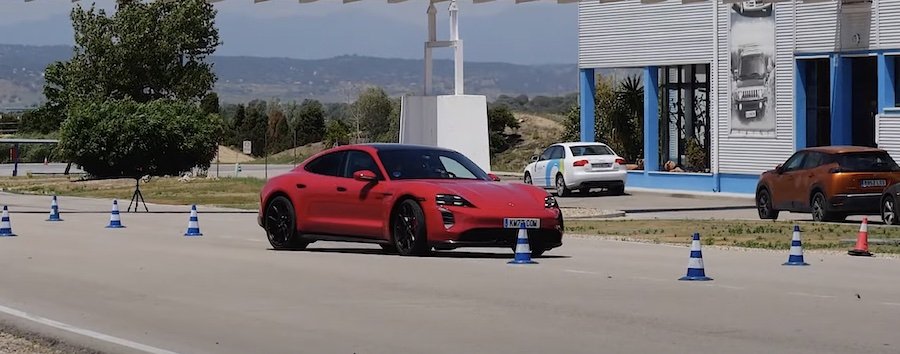Watch the Porsche Taycan GTS Dance Its Way Through the Moose Test Like a Ballerina

The Porsche Taycan tips the scales at over 2 tons. Can it dance its way through the Moose Test?
The Porsche Taycan GTS is every inch a sports car, no matter where you look. The design, the specs, everything about it screams performance, going into supercar territory.
But here come these numbers: 2.302 kilograms or 5,075 pounds. That is how much the Taycan GTS weighs. Blame it on the 93.4-kWh battery pack, that provides it with a range of up to 319 miles (513 kilometers) according to the WLTP testing cycle.
Porsche put it through all the diet that it could, but it is what it is: an electric car. And it is meant to be heavy. Not intentionally, but there is no way out of this zero-emission predicament.
To move all that weight, Porsche came up with a dual-motor setup capable of 590 horsepower (598 PS) and 626 lb-ft (850 Nm) of torque when launch control is engaged or 509 horsepower (517 PS) without it.
The Porsche Taycan GTS does the 0-62 mph (0-100 kph) in 3.7 seconds and goes all the way to a top speed of 155 mph (250 kph). But performance is not the kind of test that it has been recently put through. It is the stability and behavior in emergency situations that are tested in the Moose Test.
Independent test body km77 checked the ability of the model to evade obstacles that suddenly show up on the road. The car wears 21-inch wheels, shod its Pirelli P Zero Elect tires, specifically designed for electric cars, 265/35R1 at the front and 305/30R21 at the rear.
The test turned out to be a walk in the park for the rear-steering-equipped Porsche Taycan GTS at 76 kph (47.2 mph), little below the standard 77 kph speed of the test. Above that mark, at 78 kph (48.5 kph), it understeered a bit, but the cones were still standing in the end. At 79 kph (49.1 mph), though, it was a bit too much for the car. Again, we can all blame it on the weight. What helps, though, is the low center of gravity, which helps the car stick to the tarmac.
The Taycan GTS danced its way through the slalom course as well. In the Sport Plus driving mode, which puts the adaptive air suspension in the firmest of settings, body roll was practically non-existent, and the stability control did not need to interfere much. It needed 21.5 seconds to complete the run, which makes it 2.0 seconds faster than the Mercedes EQE, clocked at 23.7 seconds.
Related News
